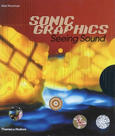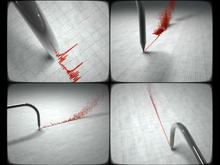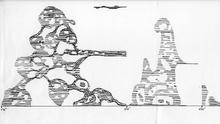Züricher Kammer Orchester: Rollercoaster
(2008)was done by Euro RSCG Group Switzerland, Zürich and produced by Virtual Republic. The lines on a sheet of music become three-dimensional and turn into a roller coaster.
Visualization of the 1st violin of the 2nd symphony, 4th movement by Ferdinand Ries in the shape of a rollercoaster. The camera starts by showing a close-up of the score, then focuses on the notes of the first violin turning the staves into the winding rail tracks of the rollercoaster. The notes and bars were exactly synchronised with the progression in the animation so that the typical movements of a rollercoaster ride match the dramatic composition of the music.
Source: Virtual Republic on Vimeo









